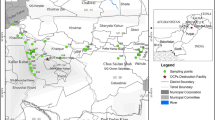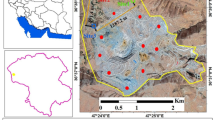Abstract.
We have used the minipig as a prospective animal model for human risk characterization to study primary biochemical alterations upon oral contaminant intake. The effects of three orally administered soils containing polycyclic aromatic hydrocarbons (PAH) on the expression pattern of the cytochrome P450 enzyme CYP1A1 in various organs have been analyzed. Dependent on the soil sample, subchronic daily oral PAH doses ranged from 0.38 to 1.90 mg PAHEPA/kg body weight. In all cases, soil administration lead to significant CYP1A1 induction in several organs of minipigs to a different extent, following the order liver ≈ duodenum >lung >kidney ≈ spleen. Hepatic ethoxyresorufin-O-deethylase activities were elevated to 310, 1250 and 1780 compared with a background level of 200 pmol resorufin/mg protein per min. Induced duodenal activities appear to be even higher than in the liver, namely 405, 1280 and 2500 compared with a basal activity of 11 pmol resorufin/mg protein per min. CYP1A1 induction in several organs is clear evidence for successful contaminant mobilization and absorption in the duodenum and subsequent distribution of contaminant into diverse body compartments. As is shown in one case, impairment of CYP1A1 induction in the liver and thus breakdown of its PAH-metabolizing activity appears to have no effect on induced CYP1A1 levels in other organs. It appears important with respect to risk assessment that induction of CYP1A1 is particularly sensitive in the duodenum of minipigs and is achieved with soil doses which are in the range of amounts ingested by playing children due to hand-to-mouth activities. Induced duodenal CYP1A1 activities obtained in minipigs by oral exposure to PAH largely exceed maximal duodenal activities so far observed in rats. This is equally relevant for risk assessment and for selection of a suitable animal model that reflects effects of PAH exposure in humans.
Similar content being viewed by others
Author information
Authors and Affiliations
Additional information
Electronic Publication
Rights and permissions
About this article
Cite this article
Roos, P.H., Tschirbs, S., Welge, P. et al. Induction of cytochrome P450 1A1 in multiple organs of minipigs after oral exposure to soils contaminated with polycyclic aromatic hydrocarbons (PAH). Arch Toxicol 76, 326–334 (2002). https://doi.org/10.1007/s00204-002-0334-x
Received:
Accepted:
Issue Date:
DOI: https://doi.org/10.1007/s00204-002-0334-x




